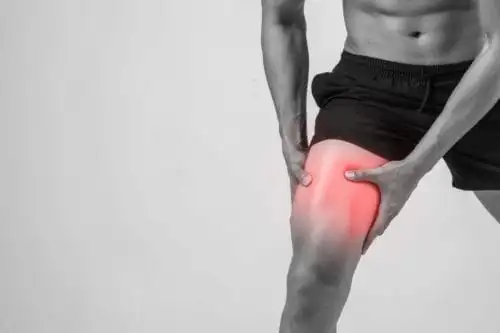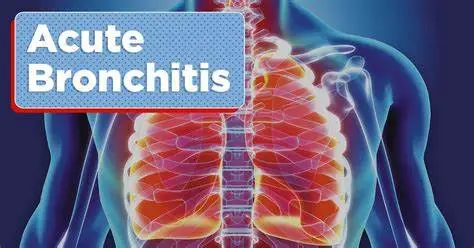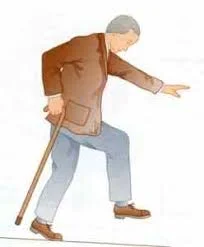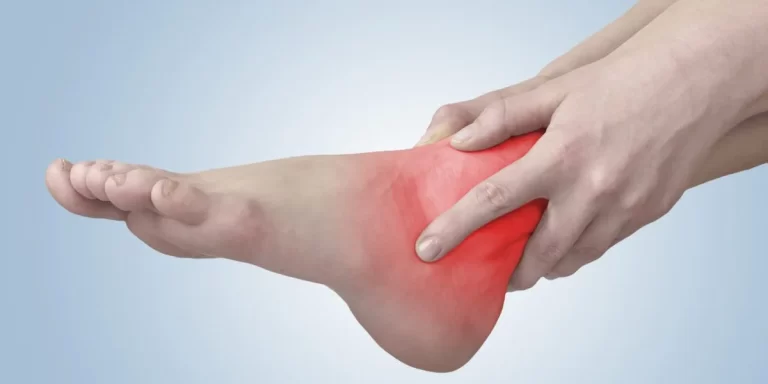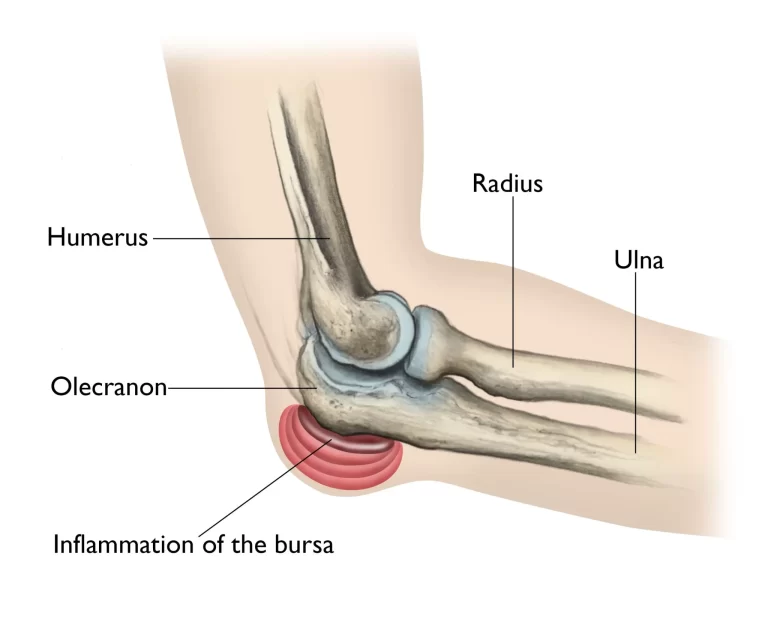Can Knee Pain Cause Sciatica?
Introduction
Sciatica usually does not result from knee pain. Pain, tingling, or numbness along the sciatic nerve, which extends from the lower back through the legs, are symptoms of sciatica. Lower back, buttock, thigh, and even knee pain can result from compression or sciatic nerve irritation. Your lower spine is the starting point for the nerves that strengthen the muscles around your knees.
Pain is experienced not just in the lower legs, foot, and knees, but also anywhere along the sciatic nerve. Most people who have sciatica or sciatic knee pain heal by changing their lifestyle and managing their pain at home. Discuss the best course of action with a physician or other medical expert. If the pain persists, gets worse, or results in other symptoms, the patient should see a doctor.
Knee pain and sciatica pain
Knee pain
 Knee Pain
Knee Pain
Everyday tasks like walking, climbing stairs, and even prolonged sitting can be hampered by knee pain, which can manifest as a dull aching, a severe stabbing feeling, or stiffness that makes mobility difficult. Any damage, inflammation, or deterioration to any component of this system may result in pain or restricted movement. Numerous factors can cause knee pain, including injuries, overuse, arthritis, and even problems with other body components like the hips or spine.
An incredibly frequent symptom, knee pain can be caused by anything from a short-term accident to a long-term illness like arthritis. If you have been injured or have had knee pain for more than a few days in a row, see a doctor.
Causes of knee pain
Overuse
Overuse knee pain is a widespread problem, particularly for sports, athletic persons, and those whose jobs require repetitive motions. In opposition to sudden injuries, overuse pain typically develops gradually over time. It happens when the knee joint is repeatedly stressed without having enough time to heal. Small tears in the soft tissues surrounding the knee may result from this, as well as irritation and inflammation.
- Patellofemoral pain (PFPS or runner’s knee).
- Osgood-Schlatter disease (jumper’s knee).
- Tendinitis (especially patellar tendinitis).
- Bursitis (especially prepatellar bursitis).
Arthritis
Osteoarthritis, another name for knee arthritis, is a degenerative condition that results in pain, stiffness, and reduced mobility as the knee joint’s cartilage ages. Knee arthritis can be caused by several variables, such as age, weight, heredity, accident, overuse, and specific medical disorders. Several factors lead to the complex illness known as knee arthritis. People can take proactive measures to control their risk and any symptoms by being aware of these factors.
- Osteoarthritis.
- Rheumatoid arthritis.
- Post-traumatic arthritis.
Injuries
- Ligament Tears: ACL, PCL, MCL, and LCL tears can result from abrupt twisting or collisions, which can cause instability and pain in the knee.
- Meniscus Tears: The knee’s meniscus, a cartilage pad, may tear, causing stiffness, clicking, and pain.
Symptoms
- Pain: This might be slight or severe, and it may get worse when you move or bear weight.
- Swelling: An accumulation of fluid around the knee may result in swelling, giving the appearance of puffiness.
- Stiffness: The inability to either straighten or bend the knee, especially after a prolonged period of inactivity.
- Restricted Range of Motion: The knee’s inability to move through its whole range of motion.
- Clicking or Popping Sounds: When the knee is moved, sounds resembling popping or clicking can be heard.
- The feeling that the knee is bending or giving way is a sign of weakness or instability.
- Warmth and Redness: The skin surrounding the knee may feel warm, red, or sensitive to the touch.
- Bruising or Discoloration: If there has been an injury, there may be bruising around the knee.
- Lack of weight-bearing capacity: In extreme situations, applying weight to the injured knee might not be feasible.
Sciatica pain
 Sciatica
Sciatica
The painful condition known as sciatica is characterized by pain, tingling, or numbness along the sciatic nerve, which runs from the lower back down each leg. More severe symptoms are also possible.
Until they are just below your knee, they all travel down the side of your body and your leg. Upon arrival, they split into more nerves that connect to farther-off regions, including your foot, toes, and lower leg.
Causes
These conditions can result in sciatica:
- Herniated disks.
- Degenerative disk disease.
- Spinal stenosis.
- Foraminal stenosis.
- Spondylolisthesis.
- Osteoarthritis.
- Injuries.
- Pregnancy.
- Tumors, cysts, or other growths.
- Conus medullaris syndrome.
- Cauda equina syndrome.
Symptoms
- Paresthesia. Sometimes known as tingling or “pins and needles.” Sitting cross-legged causes a leg to fall asleep, which is comparable to this sensation.
- Numbness. At this point, you are unable to feel anything on the skin in the affected leg or back. It occurs when your brain is having problems receiving messages from your leg or back.
- Muscle weakness. It’s a more serious symptom. It indicates that messages from your muscles are not getting to their muscles in your legs or back.
Can Knee Pain Cause Sciatica?
When you have sciatica, you may suffer the following common knee symptoms:
- A dull pain, acute pain, or warm feeling in the knee’s front, side, or rear
- Not being able to support weight on the knee.
- Giving out of the knee or buckling.
These underlying diseases may impact your joints, soft tissues like muscles, nerve roots, and spinal discsBecause sciatica usually only affects one leg at a time, knee pain usually does not impact both knees at once. Lower back diagnoses are among the most common causes of sciatica. Your joints, soft tissues like muscles, nerve roots, and spinal discs may all be impacted by these underlying diseases.
L4 radiculopathy
The L4 nerve root is compressed or irritated in L4 radiculopathy, a form of lumbar radiculopathy that causes pain, numbness, and/or paralysis in the lower back, buttocks, thighs, and even the leg. In addition to potentially affecting the knee-jerk reflex, pain may radiate down the L4 nerve root’s course. This nerve root is frequently compressed due to lower back spinal stenosis and herniated discs. A damaged L4 nerve root can also cause pain in your thigh and calf.
Tight hamstrings
The hamstrings, a set of muscles at the back of your thigh, can also get tight, which can lead to sciatica-related knee pain. When your hamstrings are tight, your lower back becomes less stable, your lower spine’s natural curvature changes, and your spinal joints experience increased stress. Self-care and medical management are popular ways to treat sciatica symptoms. Painkillers, supervised physical therapy, exercise regimens, or epidural steroid injections are popular medical therapies.
Biomechanical correction for knee pain
Limping or shifting posture as a biomechanical treatment for knee pain might strain the hip and back and potentially aggravate the sciatic nerve. To compensate for the painful knee, your body adjusts its weight and movement patterns, causing imbalances that eventually impact the sciatic nerve as well as other areas of every the area of your body that consist of your hips and back.
Limping:
When you have knee pain, you may accidentally prefer one leg over the other. Your gait changes as a result, putting more pressure and stress on your back, hip, and other leg. Muscle imbalances and greater pressure on specific places may result from the change in weight distribution, which may irritate the sciatic nerve.
Poor Posture:
You may shift your weight or lean to escape the knee pain, which can result in bad posture. Because of their direct connection to the sciatic nerve, the lower back and pelvis may be strained as a result. In addition to causing muscular imbalances and tension, poor posture can aggravate nerve pain. Several health problems, including pain, stiffness, and an increased risk of injury, can result from poor posture. Your digestion, respiration, and circulation may also be impacted. Being conscious of your habits and modifying your daily routine, such as switching up your desk or sitting posture, are key components of correcting bad posture.
Muscle Imbalances:
Muscle weakness or overactivity might result from compensatory motions. For instance, shifting your weight to one side may cause your hip and core muscles to become less active, while the thigh muscles on the side that is affected may become more active. Muscle imbalance occurs when certain muscles remain shortened or lengthened in proportion to one another, which impacts posture and mobility. Repetitive motions, injuries, or even everyday routines might cause this. Pain, bad posture, and an elevated chance of injury are among the repercussions.
Increased Stress on the Spine:
Alterations in posture and gait may also result in more strain on the joints and spinal discs, which may aggravate the sciatic nerve by generating pain and inflammation. To put it simply, knee pain can set off a series of biomechanical alterations that eventually impact the hip, lower back, and sciatic nerve. You can lessen the strain on your hip, back, and possibly the sciatic nerve by treating the underlying knee pain and adjusting any compensatory motions.
Referred Knee Pain
While lower back (lumbar spine) pain is referred to the knee, it might be confusing because the person may feel pain in their knees while the back is the true source. The way the brain interprets pain signals and the common nerve pathways are to blame for this. Someone can think they have a knee ailment when, in reality, they have a lower back problem. Even though the main problem is in the spine, knee pain may occur if a nerve in the lower back becomes inflamed or compressed (for example, as a result of a herniated disc or pinched nerve).
Referred Pain Examples:
- Sciatica: A frequent ailment in which pain travels down the leg and into the knee due to irritation or compression of the sciatic nerve in the lower back.
- Bulging Disc: When a disc in the lower back protrudes, it can put pressure on nerves, resulting in back pain that may radiate to the knee.
If the actual cause (back pain) is not found, the confusion may result in a misdiagnosis and inefficient therapy. For instance, a person may seek knee therapies (such as injections or physical therapy) without treating the underlying spinal problem.
Knee pain that may mimic sciatica
We’ll talk about two such cases below. Sciatica, a disorder where the sciatic nerve is compressed, can cause pain around the knee and occasionally result in a misdiagnosis of knee issues. The lower back may be the main area of nerve compression, but the pain may still travel down the leg and into the knee. Because of this, it may be challenging to identify the cause of the pain, which could result in an incorrect knee diagnosis.
L3 radiculopathy
A lumbar herniated disc or lumbar spinal stenosis can compress the L3 nerve root in the middle of your back, resulting in knee pain and weakness. The lower back, thigh, and maybe the inner leg might all experience pain, numbness, or weakness due to L3 radiculopathy, a disorder in which the L3 spinal nerve root is crushed or inflamed. Apart from regulating the muscles of the hip, thigh, and leg, the L3 nerve root provides feeling to the inside leg and front part of the thigh. Spinal stenosis, disc herniations, and spine degeneration are common reasons.
Patellofemoral stress syndrome
When the patella (kneecap) scrapes inappropriately on the end of the femur, it can cause patellofemoral stress syndrome, which can cause a stinging, burning feeling around the borders of your kneecap. It is characterized by frontal knee pain, which can be either severe or dull, particularly when running, crouching, or climbing flights of stairs. Common causes include abnormalities in adjacent muscles and overuse.
If your knee pain does not go away with self-care, interferes with your everyday activities, or gets worse over time, see a doctor for a diagnostic evaluation. Individuals must report all of their symptoms to their doctor to assist in identifying the underlying reason, as many back issues that generate sciatica can also result in knee pain.
When to see a doctor
With time, mild sciatica usually goes away. You may wish to speak with your healthcare professional if, after a few weeks of at-home care and exercises, your pain isn’t getting better or is getting worse.
- A leg’s sudden numbness or muscle weakness.
- Pain following a traumatic injury, like being in a car accident.
- Problems with bladder or bowel control.
- Alterations in the function of the bladder or bowel.
- An increase in weakness.
Anyone who faces any of these situations:
- Both sides of the body have sciatica, and there is numbness beneath the genitalia or around the anus.
- Significant weakness or numbness in both legs, or deteriorating weakness or numbness in both legs
- Lack of awareness of when they need to have a bowel movement or inability to control when they have one, if these symptoms are abnormal for them, trouble initiating urination, inability to urinate, or urine incontinence
Warning signs suggesting nerve involvement (including potential sciatica) in knee pain:
- A knee ache that is severe, shooting, scorching, or radiating, often accompanied by lower back, thigh, buttock, or calf pain.
- Weaknesses include buckling or giving out of the knee, difficulty straightening the knee, and weakness when trying to bear weight on the knee.
- Prolonged standing, walking, or sitting can aggravate sciatic nerve inflammation, resulting in pain.
- Feeling of a “warm” knee: Because sciatica irritates nerves, it can occasionally result in a warm knee.
Diagnosis
Overlapping Symptoms and Misdiagnosis
The location of the nerve and the radiating nature of the pain may cause sciatica-related knee pain to be mistaken for joint issues. A condition known as sciatica, which is characterized by inflammation or compression of the sciatic nerve, may be the cause of pain that radiates down the leg, including the knee. Given that knee pain is frequently a sign of joint issues such as arthritis or meniscus tears, this could be confusing.
- Location of Pain: Knee pain can result from both sciatica and joint problems. Sciatica-related pain in the knee can occur anywhere on the knee, including the front, back, and side.
- Type of Pain: Depending on the reason, sciatica pain can be severe, shooting, or mild, and joint pain can also be either way.
- Weakness and Instability: Sciatica may occasionally result in knee weakness or instability, which makes it challenging to support weight or extend the leg. This may be mistaken for an unstable joint problem.
Misinterpretation of Pain Origin:
- Radiating Pain: It might be challenging to identify the precise cause of knee pain because sciatica frequently radiates from the lower back down the leg.
- Compensation of Muscles: Muscles may move the load to other places, including the knee, to compensate for irritation of the sciatic nerve, which can cause pain that is misinterpreted as a joint issue.
How Doctors Rule Out Causes:
- Medical History: Physicians will inquire about the patient’s symptoms, such as the location, severity, and length of the pain, in addition to any additional symptoms that may be associated.
- Physical Assessment: To evaluate the patient’s strength, reflexes, sensibility, and range of motion, doctors will conduct a physical examination.
- Imaging Tests: To help detect any anomalies, X-rays, MRIs, or CT scans can be utilized to view the knee’s structures and spine.
- Electromyography and nerve conduction studies are two procedures that can evaluate how well muscles and nerves work and detect injury or compression of the nerves.
- Straight leg rise. One by one, they will slowly elevate your legs toward the ceiling before you inquire whether you are experiencing any pain or other symptoms. When it comes to treating sciatica, these can help identify its cause. To confirm the diagnosis and rule out other options, other tests, such as imaging or nerve conduction studies, may be conducted based on the results of the SLR and other physical examination findings.
- Physicians can determine the precise source of pain and make a diagnosis by taking into account the patient’s medical history, physical examination findings, SLR results, and other tests.
Treatment Approaches
The differences between treating sciatica and treating actual knee problems.
How to Effectively Treat Sciatica Pain
Move regularly
 Best Exercises For Sciatica Pain
Best Exercises For Sciatica Pain
Long periods spent in one position might worsen sciatica. This is especially true while one is seated, and those who work at a desk frequently discover that their sciatica gets considerably worse when they eventually get up. Regular exercise and targeted stretching techniques can help reduce sciatica pain by improving lower back and leg strength and flexibility. Walking, swimming, or yoga are gentle workouts that can significantly improve pain management.
Even if it’s only crossing the room to grab a drink of water, try to take quick movement breaks as frequently as you can. Sometimes, this change in posture might help relieve pain in the knee and sciatic nerve irritation.
Gentle exercise
 Sciatica Nerve Stretches
Sciatica Nerve Stretches
To open your hips, try the figure-4 stretch. Although there are other variations of this stretch, you can use the following instructions to relieve sciatic nerve pain:
- Bend both knees while lying flat on your back.
- Cross your right foot over your left thigh and raise your legs to your body.
- This stretch should not be forced.
Walking, stretching, and swimming are all gentle forms of exercise that can help with sciatica. Choose the motion that appears most natural to you. You should try a movement more frequently if it helps with your pain.
Heat, ice, and pain relief
 Hot-pack-or-ice-pack
Hot-pack-or-ice-pack
You can recover faster if you use heat, ice, or painkillers. When we’re in pain, we often move strangely or avoid moving at all. You can move more normally and hasten the healing process by lowering your pain levels and getting instant sciatica relief. Sciatica pain can be momentarily relieved by applying heat or ice to the affected area. Heat can ease tense muscles and increase blood flow to the afflicted area, while cold packs numb the area and reduce inflammation.
Physical therapy treatment
Sciatica-related knee pain can be identified and treated by our highly skilled physiotherapy staff. In addition to a variety of other treatment modalities, our specialists are skilled in manual therapy, acupuncture for sciatica, massage for sciatica relief, and exercise therapy.
Exercises that increase flexibility, strengthen the muscles that support your spine, and lessen strain on the sciatic nerve might be prescribed by a physical therapist. Consulting with the top orthopedic specialist can guarantee that you adhere to a customized and successful treatment regimen. Injuries to muscles and ligaments, meniscus tears, knee arthritis, and numerous other knee disorders can all benefit from physiotherapy.
Pain management
A group of experts in our pain management unit can evaluate and treat you the same day. We provide a variety of pain management treatments, such as steroid injections and other back pain injections that can also help with sciatica-related knee pain.
Acetaminophen or ibuprofen are examples of over-the-counter pain medications that can help control sciatica pain. Sometimes your doctor will prescribe more severe drugs, including muscle relaxants or anti-inflammatory drugs, to manage severe pain.
Surgery
A group of internationally recognized neurosurgeons and spinal surgeons collaborate with Harley Street Specialist Hospital. They can provide the best treatment to permanently heal sciatica and make sure you feel comfortable and in control during the procedure if you need surgery for your knee and sciatica pain.
- Laminectomy. To make greater space for the spinal nerves, the lamina is either removed entirely or in part during this treatment. Most often, it is used to alleviate sciatica brought on by stenosis of the lumbar spine. Approximately 75 to 90 percent of individuals may report less pain after lumbar laminectomy surgery.
- Foraminotomy. During this procedure, bone overgrowth is removed to provide the nerve root greater room as it exits the spinal column through the neuroforamen. Foraminotomy is frequently used to treat spinal stenosis, a condition in which the spinal cord or nerve roots are compressed due to a narrowing of the spinal canal or foramina. Numerous conditions, including arthritis, bone spurs, or herniated discs, can result in this constriction.
- Facetectomy. The purpose of this surgical technique is to release pinched nerves that have been compressed by degenerative facet joints. After having a facetectomy, 85% of patients are thought to report feeling less pain.
Tips for relieving sciatica pain
The symptoms of sciatica and sciatic knee pain can be lessened by a variety of lifestyle modifications and natural treatments. Among these could be:
- Avoiding activities that worsen the pain and applying a hot or cold compress can help relieve pain and reduce inflammation.
- Refraining from prolonged standing or sitting.
- Preserving perfect posture, building core strength, stretching and strengthening the hamstrings and lower back, sticking to a regular, low-intensity training schedule, and only lifting objects in the right manner.
When should I consult a doctor?
Consult a doctor if your lower back or leg pain is so bad that it prevents you from moving or if, after a week or two of at-home treatment, there are no indications that the pain is improving. You should consult your physician right away if you suffer from:
- Leg or foot weakness that is growing worse. Changes in the function of your bladder or bowel.
- Your groin area may feel numb or different. Both legs are experiencing worsening pain and changed sensation.
- Worsening symptoms: Get medical help right away if the pain worsens, moves to other places, or you develop new symptoms, including weakness, tingling, or numbness in your leg.
Summary
Although sciatica and knee pain are not directly related, they can occasionally overlap or imitate one another. Moreover, several conditions that cause knee pain can also exhibit symptoms similar to sciatica.
Making lifestyle adjustments and managing pain at home are usually how people recover from sciatica and sciatic knee pain. Nonetheless, there are medical therapies for sciatica, which can cause excruciating pain. Consult a physician or other healthcare provider regarding the best course of action. A person should get more medical help if the pain persists, gets worse, or results in new symptoms.
FAQs
What symptoms indicate the healing of sciatica?
Several symptoms may suggest that sciatica is getting better. These include less muscular spasms, improved leg strength and range of motion, a change in the location of pain (from the leg back to the hip and spine), and a reduction in tingling or numbness. An improvement in sensitivity and a reduction in tingling or numbness are also signs of a return of nerve function. You might discover that your walking distance or standing time has increased.
When dealing with sciatica, is it better to sit or lie down?
Short-term lying down can help if the pain is severe, but long-term bed rest doesn’t. Therefore, it’s critical to get up and begin walking modest distances as soon as the pain is tolerable. Avoid sitting or driving for extended periods since sitting puts more strain on the lower back discs.
How long does knee pain from sciatica last?
Knee pain and other sciatica symptoms usually go away in four to six weeks. But in some situations, it can take longer—weeks or months, perhaps, especially if the pain is severe or accompanied by other symptoms. Sciatica is deemed chronic if the pain lasts more than six weeks.
How can sciatica be permanently treated?
Treating the root cause is essential to a long-term solution for sciatica. Many people can find long-term relief with non-surgical treatments like physical therapy, chiropractic care, and lifestyle adjustments, while in certain extreme situations, surgery may be required. These methods concentrate on enhancing posture, strengthening supporting muscles, and releasing strain on the sciatic nerve.
Can sciatica be cured by walking?
Walking can be a useful component of the management and therapy of sciatica, even though it won’t “cure” the condition. Walking can increase mobility, reduce inflammation and pain, and may decrease the likelihood of problems. Walking with sciatica should be approached slowly, though, and you should pay attention to your body.
What instantly relieves nerve pain?
Even though nerve pain can be incapacitating, several treatments can either instantly relieve it or lessen its intensity. Localized numbing or pain reduction can be achieved with topical analgesics such as capsaicin patches or lidocaine lotions. Furthermore, pain can be lessened by pharmaceuticals such as anti-seizure medications (gabapentin, pregabalin) or NSAIDs (ibuprofen, naproxen). Additionally helpful is physical therapy, which includes massage and mild exercises. Nerve blocks, injections, and even surgery could be suggested in certain situations.
What is the most effective sciatica treatment?
Physical therapy, pain management, and treating the underlying cause are some of the methods that are frequently used in the most successful sciatica treatments. Pain and inflammation can be reduced with the use of medications such as NSAIDs, muscle relaxants, and in certain situations, nerve blocks or injections. Alternative treatments like deep tissue massage or acupuncture may also be beneficial in certain situations.
What relieves sciatica-related knee pain?
Physical therapy, medication, and lifestyle changes are some of the methods used to treat sciatica-related knee pain. Stretching and strengthening exercises are examples of physical therapy that can help reduce sciatic nerve pressure and increase mobility. Prescription or over-the-counter painkillers may also offer short-term respite. Furthermore, pain can be lessened and additional injuries can be avoided by avoiding extended periods of sitting or standing, using safe lifting practices, and keeping adequate posture.
Reference
- Professional, C. C. M. (2025a, March 19). Knee pain. Cleveland Clinic. https://my.clevelandclinic.org/health/symptoms/21207-knee-pain
- Nwachuku, A., DO. (2020, May 4). Does sciatica cause knee pain? Spine-health. https://www.spine-health.com/blog/does-sciatica-cause-knee-pain#google_vignette
- Sciatica – Symptoms and causes. (n.d.). Mayo Clinic. https://www.mayoclinic.org/diseases-conditions/sciatica/symptoms-causes/syc-20377435
- Stasko, N. (2024, March 20). Does sciatica cause knee pain? Harley Street Specialist Hospital. https://hssh.health/blog/does-sciatica-cause-knee-pain/
- Vevers, S. (2023, September 6). Can sciatica cause knee pain? https://www.medicalnewstoday.com/articles/can-sciatica-cause-knee-pain#pain-relief-tips
- Mehra, V. (2024, August 13). 8 Effective ways to manage sciatica pain. Dr Vikas Mehra. https://drvikasmehra.co.in/8-effective-ways-to-manage-sciatica-pain/


